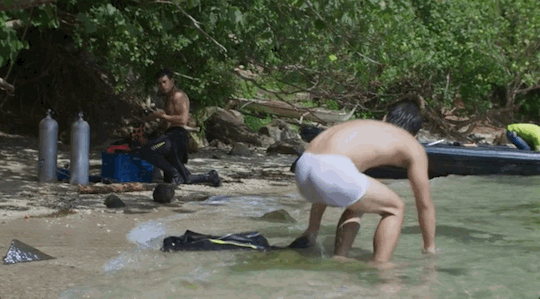#Vince Rillon
Text
Araro
Araro (Mini-Serie 2023)
#MicaellaRaz #VinceRillon #RobbGuinto #ArahAlonzo #DyessaGarcia #CessGarcia
Mehr auf:
Mini-Serie Jahr: 2023 (November)
Genre: Krimi / Drama
Hauptrollen: Micaella Raz, Vince Rillon, Robb Guinto, Arah Alonzo, Dyessa Garcia, Cess Garcia, Jenn Rosa, Vern Kaye, Matt Francisco, Ronnie Lazaro …
Serienbeschreibung: Ein Arbeiter beginnt eine Liebesaffäre mit seiner Chefin, was sein Leben bis an seine Grenzen kompliziert…

View On WordPress
1 note
·
View note
Text
HOSTO (2023) Movie Trailer: Multiple Sprawling Love Stories Take Place Across the Globe in Jao Elamparo's Film
https://film-book.com/hosto-2023-movie-trailer-multiple-sprawling-love-stories-take-place-across-the-globe-in-jao-elamparos-film/?feed_id=72853&_unique_id=647940a877440
#MovieTrailer#AlexaOcampo#AliAsistio#AngelaMorena#CenterStageProductions#DeniseEsteban#Hosto#JaoElamparo#JayManalo#VinceRillon#VivaFilms#Vivamax#filmbook
0 notes
Text
Virgin Forest | OFFICIAL TRAILER | Streaming worldwide this June 24 exclusively on Vivamax
Virgin Forest | OFFICIAL TRAILER | Streaming worldwide this June 24 exclusively on Vivamax
Ngayong June 24, ililigaw namin kayo sa isang SARIWA at NAKAMAMANGHA ngunit MAPANGANIB NA PARAISO.
Check out the OFFICIAL TRAILER of Vivamax Original Film and Brillante MA Mendoza’s ‘VIRGIN FOREST’.
Starring our K-Krush Angeli Khang, Sid Lucero, Vince Rillon, Rob Guinto, Kat Dovey, Micaella Raz, and many more!
WORLD PREMIERE this June 24 exclusively on Vivamax
For more movie updates, follow us on…
View On WordPress
0 notes
Text
19th Asian Film Festival
Si è conclusa un'altra grande edizione di Asian Film Festival ecco tutti i vincitori:
Newcomers Best Film
Tiong Bahru Social Club (2020) Bee Tan Thiam

Best Actress
Kaya Kiyohara
In The Wake (2021) Takahisa Zeze

Best Actor (ex aequo)
Christian Bables
Big Night (2021) Jun Robles Lana
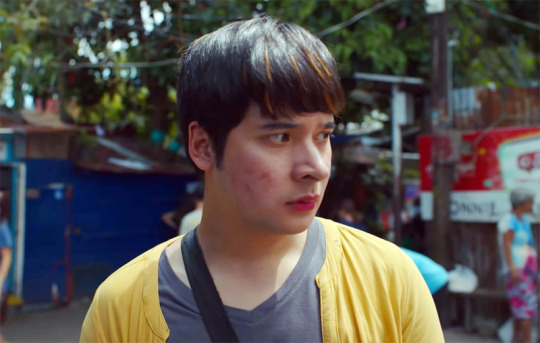
Vince Rillon
Resbak (2021) Brillante Mendoza
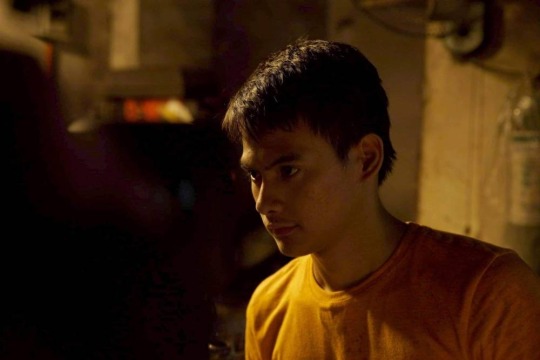
Best Original Film
The Wheat (2021) Tang Yu-Qiang

Best Director
The Edge of Daybreak (2021) Taiki Sakpisit

Best Film
On The Job, The Missing 8 (2021) Erik Matti

#asian film festival#AFF19#mine#me#awards#newcomers#best actress#best actor#best original film#best director#best film#tiong bahru social club#in the wake#big night#resbak#the wheat#the edge of daybreak#on the job the missing 8#bee tan thiam#takahisa zeze#jun robles lana#brillante mendoza#christian bables#vince rillon#tang yu-qiang#taiki sakpisit#erik matti
13 notes
·
View notes
Text
Vince Rillon inaming nakaranas na ng threesome: "Siyempre mapusok tayo noong kabataan natin."
Vince Rillon inaming nakaranas na ng threesome: “Siyempre mapusok tayo noong kabataan natin.”
© Provided by PEP.ph
Si Vince Rillon ang pangunahing aktor sa Siklo, ang sexy suspense drama movie ng direktor na si Roman Perez Jr. at opening salvo ng Vivamax para sa January 2022.
Si Giselle Sanchez ang host ng virtual media conference ng Siklo, at siya ang nagtanong kay Vince tungkol sa pinakamapangahas na ginawa nito sa tunay na buhay.
Sabi pa ni Giselle, hindi raw kasali ang sexy scene…

View On WordPress
0 notes
Photo

Vince Rillon on frontal nudity in Coco-Julia movie JERRY OLEA Nag-frontal si Vince Rillon sa pelikula nina Coco Martin at Julia Montes na kinunan ni Direk Brillante Mendoza kamakailan sa Pola, Oriental Mindoro. “Nakita lahat,” napapangiting pahayag ni Vince Rillon nitong Agosto 14, Sabado ng hapon, s... https://trendingph.net/vince-rillon-on-frontal-nudity-in-coco-julia-movie/?feed_id=332572&_unique_id=6118d85cd4edc #cocojulia #frontal #movie #nudity #philippinenews #philippinesnews #rillon #trendingph #vince
0 notes
Text
New world news from Time: A New Netflix Series Tells the Story of the Philippines’ Drug War. But Its Critics Are Condemning Amo as Propaganda
A week after it premiered, few of the extras that feature in Netflix’s first ever Philippine series had seen the show. Outside the barbecue stand she runs in the Manila neighborhood where Cannes award-winning director Brillante Mendoza shot Amo (pronounced “am-ohr,” it means boss), Nerisa Perez recalled acting in one of its scenes. A fictional SWAT team had raided a nearby shanty, killing her fictional brother, and Perez had to sink to her knees and lament his death. “What did my brother do?” was her line. None of the dozen or so people outside Perez’s stall — some of whom also appear in Amo — had caught their neighbor’s big moment. Still, their memories of the shoot were vivid: “It felt so real. We were afraid,” one said.
Only about 50,000 of Netflix’s 125 million subscribers, or about 0.04%, live in the Philippines. Nevertheless, Amo has proved controversial. The series is set against the backdrop of President Rodrigo Duterte’s drug war and follows a high-school student entangled in the drug trade. But unlike the directors of Netflix’s other long-running drug war series, Narcos, Mendoza, 57, is an unapologetic advocate of the brutal suppression of pushers and users. The Philippines’ most famous director has said Duterte’s campaign is “necessary” for his own and “other countries afflicted with the drug problem,” according to Agence France-Presse. He has filmed and telecast both of the president’s State of the Nation Addresses, and previously worked on government anti-drug films.
Mendoza’s apparent closeness to Duterte has prompted allegations that his series is propaganda for the bloody campaign. Officially, more than 4,000 people have been killed in police anti-drug operations since Duterte took office on June 30, 2016. However an opposition senator has alleged that as many as 20,000 people may have been killed on Duterte’s watch, citing a further 16,355 homicide cases classified as deaths “under investigation” from July 1, 2016 to Sept. 30, 2017.
Read more: The Mutineer: How Antonio Trillanes Came to Lead the Fight Against Rodrigo Duterte
While Mendoza is not the first Filipino filmmaker to address the drug war, his international reputation and Netflix’s backing lend Amo a profile far beyond previous pro-drug war movies like Double Barrel and Kamandag Ng Droga. Criticism has followed. A petition that asks Netflix to cancel the show, started by a Filipino mother whose disabled son was murdered in the drug war, has gathered more than 10,000 signatures. A group of 13 human rights groups recently called on Netflix to cancel the series they claim “aims to justify extrajudicial killings,” according to CNN.
“Anyone familiar with the Duterte drug war will find little in Amo’s 13 episodes that corresponds to the reality of the state-backed campaign of unlawful killings that has killed more than 12,000 Filipinos since July 2016,” Human Rights Watch deputy Asia director Phelim Kine tells TIME by email. He adds: “Several sequences in Amo appear to be deliberate efforts to reinforce the government’s willfully deceptive counter-narrative to scrupulously documented human rights abuses linked to the anti-drug campaign.”
In response to the criticism, Netflix told TIME via email that the service “offers a diverse choice for consumers to decide on what, where and when they want to watch. We understand that viewers may have opposing opinions but leave it to them to decide.”
The controversy over Amo comes amid a broader debate on how the Philippine drug war is presented to the world. In February, the International Criminal Court (ICC) launched a preliminary examination into allegations of crimes committed by the state. Duterte continues to direct expletive-laden tirades at the European Union and U.S. State Department, U.N. special rapporteur Agnes Callamard (whom he threatened to slap “because you are insulting me… You are f–king me and I do not want it”) and ICC investigators, whom he says he will have arrested. Meanwhile Foreign Secretary Alan Cayetano claims Human Rights Watch is “misrepresenting” the drug war, portraying “an unfair and unjust image of our country.”
Noel Celis—AFP/Getty Images Analyn Roxas, 26, mourns with her sister after her partner, Valien Mendoza, a suspected drug dealer, was gunned down by unidentified assailants in Manila, March 7, 2017.
‘There is no investigation’
On a corner table in the house Luzviminda Siapo shares with her mother and surviving daughter is a shrine to her dead son, Raymart. A vase of flowers, and offerings of cookies decorate the table in front of a framed photograph of the smiling 19-year-old. There’s also a motorcycle helmet, keeping faith with a promise Siapo had made to buy her son a motorcycle.
Speaking with TIME in Cavite, an hour’s drive south of Manila, Siapo says she was working as a domestic helper in Kuwait when relatives informed her of Raymart’s death. A neighbor had formally accused Raymart of selling marijuana after an argument. The following day, 14 masked men arrived on motorbikes looking for her son. The men abducted Raymart, who is disabled, took him to a parking lot, and shot him twice in the head.
Although witnesses told Siapo the group that abducted Raymart included police, his death is not counted in the more than 4,000 killings that the Philippine National Police (PNP) say have occurred when suspects fought back during “legitimate police operations.” Instead, it is classified as a death “under investigation.” That term is a misnomer.
“They haven’t closed the case but nobody is investigating,” Siapo says. “There is no investigation.”
Research by human rights groups and journalists has tied police, or mercenaries acting at the behest of the police, to deaths “under investigation.” Last year, two senior police officers told Reuters that members of the PNP planted evidence at crime scenes, carried out most of the killings blamed on vigilantes and received financial rewards for street executions.
There is scant hope of justice for the victims of extrajudicial killing — so common in the Philippines that many refer to it by the initials EJK — even in what appear to be slam-dunk cases. The police officers who kidnapped, ransomed and killed Korean businessman Jee Ick Joo at the police headquarters Camp Crane in October 2016 have yet to be sentenced. Officers at the National Bureau of Investigation determined to have murdered a former mayor in his jail cell have been reinstated to active duty following the president’s intervention.
Mendoza’s series, Siapo says, does not show the stark reality of the war on drugs, “If you see EJK victims, if you see Kian [Loyd delos Santos],” referring to a 17-year-old boy who was fatally shot by plainclothes police and abandoned next to a pigsty in a case that galvanized what was previously scant opposition to the drug war, “they were killed; the police killed them.”
Noel Celis—AFP/Getty Images Relatives and supporters of 17-year-old student Kian Loyd Delos Santos, who was allegedly killed by police, participate in his funeral march in Manila on Aug. 26, 2017.
After a scheduled interview with Mendoza was cancelled, he told TIME by email that he was “very sorry” for Siapo’s loss but denied Amo is propaganda or that the government had a hand in making it.
“My job is to engage my audience intelligently on what they are watching. What I want is for my audience to have their own take on the subject matter, have a healthy discussion among themselves, to scrutinize the show if they don’t agree on what they see,” he writes.
To be sure, Amo does show corruption in both the rank-and-file and the upper echelons of the PNP. The first half of Amo focuses on high school student Joseph (Vince Rillon), who is introduced as a drug runner and then gets sucked deeper into the trade, supplying designer narcotics to Manila’s elite. To research the role, Rillon tells TIME near his house in Mandaluyong, he talked with high school students in slum areas that actually pushed drugs. The second half of Amo dramatizes the real-life killing of the Korean businessman Joo. In Mendoza’s telling, the victim — rendered as a Japanese national — is involved in the drug trade.
Some local critics have complemented Mendoza’s breathtaking “guerilla-style handheld camera work.” Others, however, have derided the series for its flat characters, the lack of cohesion across its 13 episodes, and the fact women are rendered almost exclusively as either grieving partners or prostitutes.
‘It’s justifiable to exterminate them’
It is easy to see why Mendoza made Amo, and why Netflix commissioned the series. Though the rate of killings has slowed in recent months, the first year of the drug war exerted a grotesquely cinematic pull. Manila’s rain-slicked streets looked like a wet-down set. TV crews’ rigs and police lights rendered murder scenes in vivid high contrast. And the president — true to his nom-de-guerre, Duterte Harry — would speak straight to camera, dragging his finger across his throat as he threatened to kill criminals. There were curbside bodies in B-movie poses. Blood pooled on asphalt and smeared over linoleum. There were heads bound with yellow duct tape along major boulevards, and bodies bagged in cobalt plastic or strewn with cardboard signs.
Images associated with the drug war inevitably penetrated popular culture. In Navotas — the Manila neighborhood where Raymart Siapo was killed — a restaurant named its dishes after police kill methods. Last November, Apple removed mobile phone games from its App Store that allowed users playing as Duterte and Police Chief Ronald Dela Rosa to kill drug addicts, the BBC reports. “Murder has been reduced to a meme,” journalist Patricia Evangelista wrote after reporting on a series of killings in which killers had scrawled attempted witticisms on signs strewn over the dead; over the duct-taped head of one cadaver, they had drawn eyes, a nose and a grinning mouth.
Read More: Photographs From The Front Lines of Philippines’ Drug War by James Nachtwey
Activist filmmaker Kiri Dalena tells TIME such cruelties are calculated. When she documented the killings of leftist rebels known as the New People’s Army in the Philippine mountains years ago, she says, their maggot-infested bodies were often left rotting in the sun with locals afraid to move them.
“It’s a sort of warning that you do not join the New People’s Army, otherwise this will happen to you,” Dalena says, adding that a similar strategy may be at play in the way police display the bodies of drug suspects and readily tip off Manila’s press corps. “People always assume when people die a gruesome death it has something to do with drugs; when there’s torture it has something to do with drugs.”
Amo is propaganda in that it reinforces the idea of the Philippines as so irredeemably corrupted by “the drug menace” that it requires Duterte’s savage solution. But even if the country is far from the most egregious example of global drug use, saying so is dangerous. In May last year, Duterte fired the Chairman of the Dangerous Drugs Board, Benjamin Reyes, for hewing to the findings of the Philippines’ last household survey on drug use (1.8 million users) rather than the parroting the 3, 4, or 7 million addicts Duterte and Cayetano have variously claimed.
Reyes’ successor resigned after suggesting a new 10,000-bed “mega drug rehab” facility was a mistake, urging community-based treatment instead. Duterte’s most ardent critic, Leila de Lima, has now been in jail for 14 months. The Philippines top lawyer called Vice President Leni Robredo “treasonous” for publicly condeming the drug war. Critical journalists are accused of “destabilizing” the country, deemed by Duterte legitimate targets for assassination, harassed by state-sponsored cohorts of online trolls and banned from covering government events.
As Duterte’s sky-high approval ratings attest, his portrayal of the Philippines as a crime-ridden, near narco state enjoys popular support. The president’s statement that he is “happy to slaughter” three million drug addicts has met with horrified reactions overseas, but did not significantly dent his popularity at home.
“The middle class already had issues regarding the urban poor encroaching upon the cities, and then you have the drug addicts who are unproductive and become snatchers,” says Dalena. “A lot of Filipinos have been persuaded that there’s no hope for these people and that they are no longer human beings. Therefore they no longer have human rights and it’s justifiable to exterminate them.”
Ezra Acayan—Reuters Philippine President Rodrigo Duterte listens to Philippine National Police (PNP) Director General Ronald Dela Rosa at the presidential palace in Manila, Philippines on Jan. 29, 2017.
How then, should filmmakers engage? Rather than calling for the censorship of pro-government voices like Mendoza’s, Dalena’s collective RESBAK — a local slang term for fighting back with reinforcements — attempts to reflect the experience of urban poor communities that have been most terrorized by the drug war. In December 2016, the group filmed a powerful alternative version of a popular Filipino Christmas song, with relatives of drug war victims holding up cardboard signs bearing empowering messages. Other works include a dance performance called 15 Minutes of Your Time mocking the government’s attempts to cure addicts with Zumba classes. Then there’s the mural on the side of Manila’s Baclaran church, for which RESBAK-affiliated artists sought mosaic contributions from drug war victims who were seeking sanctuary there.
Of Mendoza’s assertion that his series presents the drug war from different angles so that the viewer can decide, Dalena says: “Perhaps in a different time, maybe it would have worked, [but] this is not a time to be ambiguous or to be safe. What is his stand? For the killings? I haven’t heard any opposition from him.”
A few nights before PNP Chief Dela Rosa retired from his post with “no regrets” to take a new job at the head of the Bureau of Corrections, the presenters on local radio station Wave 89.1 did their best to soothe the bumper-to-bumper drivers inching through the notorious Manila gridlock. Between slow jams, Wave’s hosts riffed on TV shows that Filipinos binge-watched at the expense of other tasks. One listener spent hours watching Friends 14 years after its finale, another had missed filing tax returns because of the American legal comedy Drop Dead Diva. Modern Family had meanwhile stood in for the real family of a woman working overseas. There was no mention, however, of Amo.
A few blocks east, a busking rap group comprised of Vincent, 15, David, 9, and Christopher, 8, plied their trade. Most of the nightly 300 to 800 Pesos ($6 to $15) they earn comes from tourists enthralled by their flow. The tourists are unaware that their upbeat rap, in Filipino, tells the story of Kian Loyd delos Santos’ killing.
“Hey fellow Filipinos, let’s go, let’s wake up,” it begins, before talking about being abducted then shot by police.
“Goodbye to all, take care,” Vincent raps in the voice of Kian: “Justice is all I need, and hopefully I’m the last.”
— With reporting by Martin San Diego / Manila
April 30, 2018 at 02:38PM ClusterAssets Inc., https://ClusterAssets.wordpress.com
0 notes
Photo
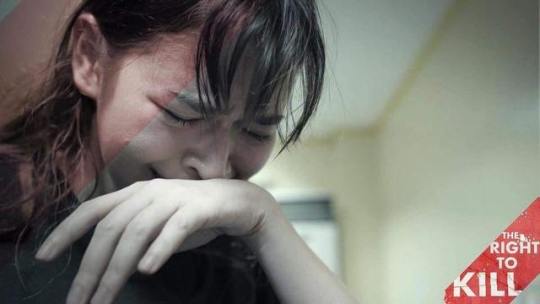
Sino ang mas pipiliin mo?, Asawa o Kapatid? Abangan si Bela Padilla at Vince Rillon sa pelikulang The Right To Kill #TheRightToKill #RightToKill #Killing ♤♡◇♧ Directed by: Brillante Mendoza Written by: Troy Espiritu
0 notes
Text
Japino
Japino (2023)
#FreidricMacapagalCortez #AngelaMorena #DeniseEsteban #AliAsistio #VinceRillon #LaraMorena
Mehr auf:
Jahr: 2023 (November)
Genre: Drama
Regie: Freidric Macapagal Cortez
Hauptrollen: Angela Morena, Denise Esteban, Ali Asistio, Vince Rillon, Lara Morena …
Filmbeschreibung: Während sie nach ihrem Vater und gleichzeitig nach ihrer Identität sucht, gerät eine junge Frau in verschiedene Probleme und Versuchungen…

View On WordPress
#Ali Asistio#Angela Morena#Denise Esteban#Freidric Macapagal Cortez#Lara Morena#Vince Rillon#Viva Originals
0 notes
Text
Sila Ay Akin
Sila Ay Akin (2023)
#McArthurCAlejandre #AngeliKhang #AziAcosta #VinceRillon #VictorRelosa #AngieCastrence
Mehr auf:
Jahr: 2023
Genre: Drama
Regie: McArthur C. Alejandre
Hauptrollen: Angeli Khang, Azi Acosta, Vince Rillon, Victor Relosa, Angie Castrence, Andrea Garcia, Cess Garcia …
Filmbeschreibung: Eine Geschichte über komplexe familiäre Beziehungen, in denen sie auf vielfältige Weise kämpfen, um zu überleben und zusammen zu bleiben…

View On WordPress
0 notes
Text
Hosto (2023)
Hosto (2023)
#JaoDanielElamparo #AngelaMorena #DeniseEsteban #VinceRillon #AliAsistio #AlexaOcampo
Mehr auf:
Jahr: 2023
Genre: Drama
Regie: Jao Daniel Elamparo
Hauptrollen: Angela Morena, Denise Esteban, Vince Rillon, Ali Asistio, Alexa Ocampo, Jay Manalo …
Filmbeschreibung: Patrik erhält ein Visum für Japan, um seine Familie zu unterstützen. Doch als er mehr Geld verdienen muss, wird er mit der Möglichkeit konfrontiert, ein Host zu werden. Kann er in dieser Welt voller anzüglicher Vorschläge…
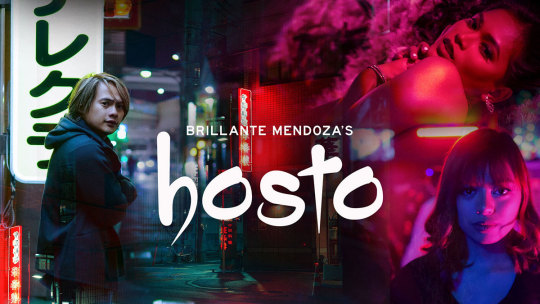
View On WordPress
0 notes
Text
SSSSHHH
SSSSHHH (Serie 2023)
#SalomeSalvi #YenDurano #MicaellaRaz #ChesaParedes #QuinnCarrillo #JuliaVictoria
Mehr auf:
Serie Jahr: 2023- (März)
Genre: Drama
Hauptrollen: Salome Salvi, Yen Durano, Micaella Raz, Chesa Paredes, Quinn Carrillo, Julia Victoria, Alexa Ocampo, Aaron Villaflor, Vince Rillon, Rash Flores, Vr Relosa, Jeffrey Hidalgo, Joharan Navarro, Amanda Avecilla, Aerol Carmelo …
Serienbeschreibung: Vier aufregende Geschichten in einem heißen Podcast, moderiert von der beliebten Content-Erstellerin…

View On WordPress
0 notes
Photo
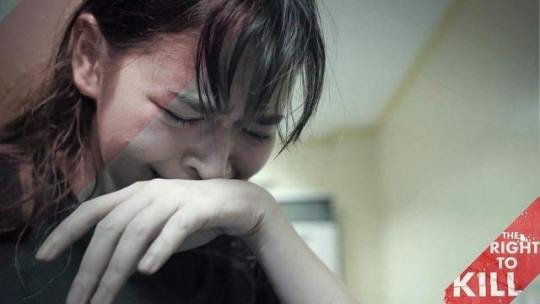
Sino ang mas matimbang, Asawa o Kapatid? Abangan si Bela Padilla at Vince Rillon sa pelikulang The Right To Kill #TheRightToKill #RightToKill #Killing ♤♡◇♧
0 notes
Photo

BTS: The Right To Kill starrimg Vince Rillon Directed by: Brillante Mendoza Written by: Troy Espiritu Coming Soon!
0 notes


